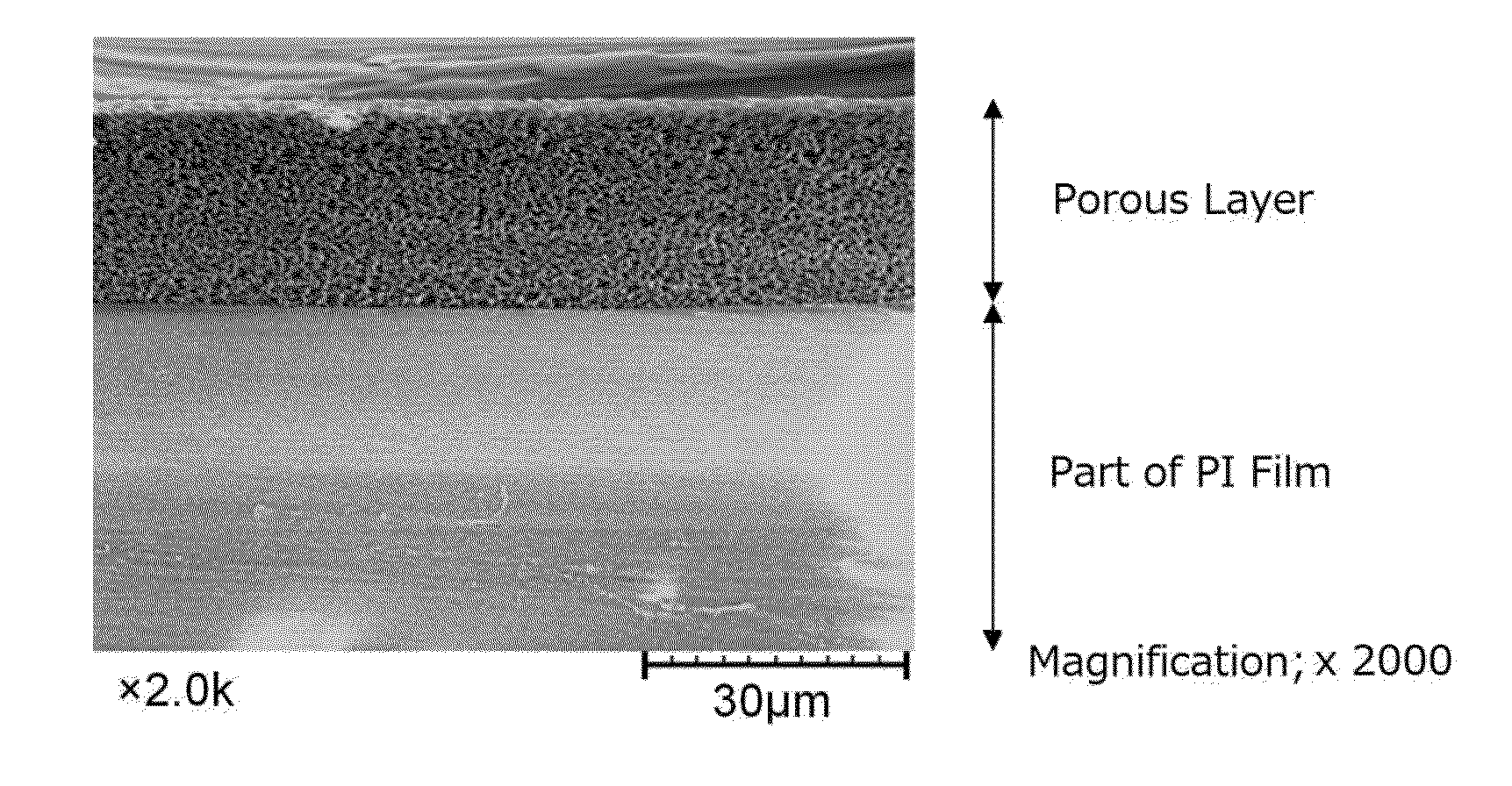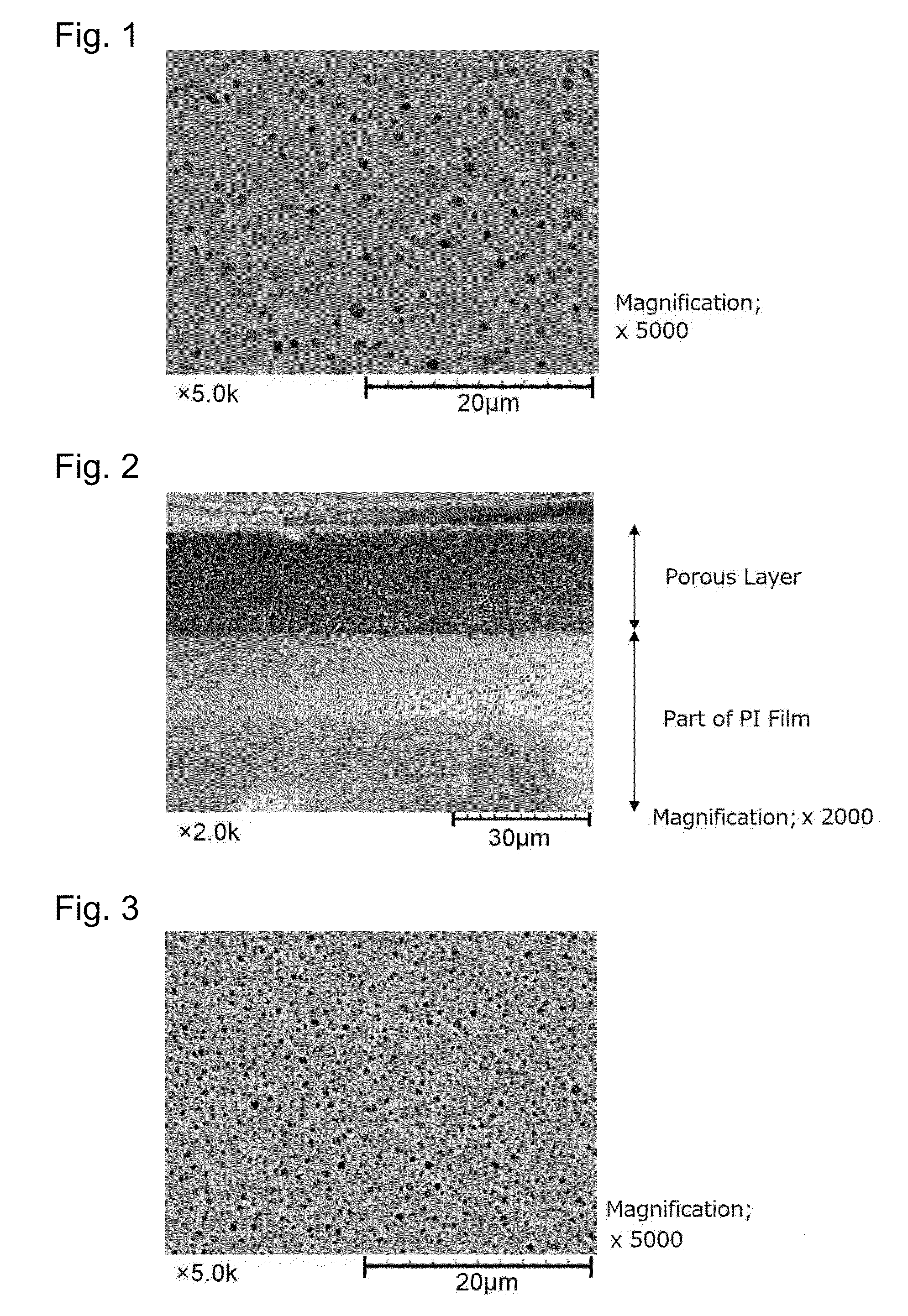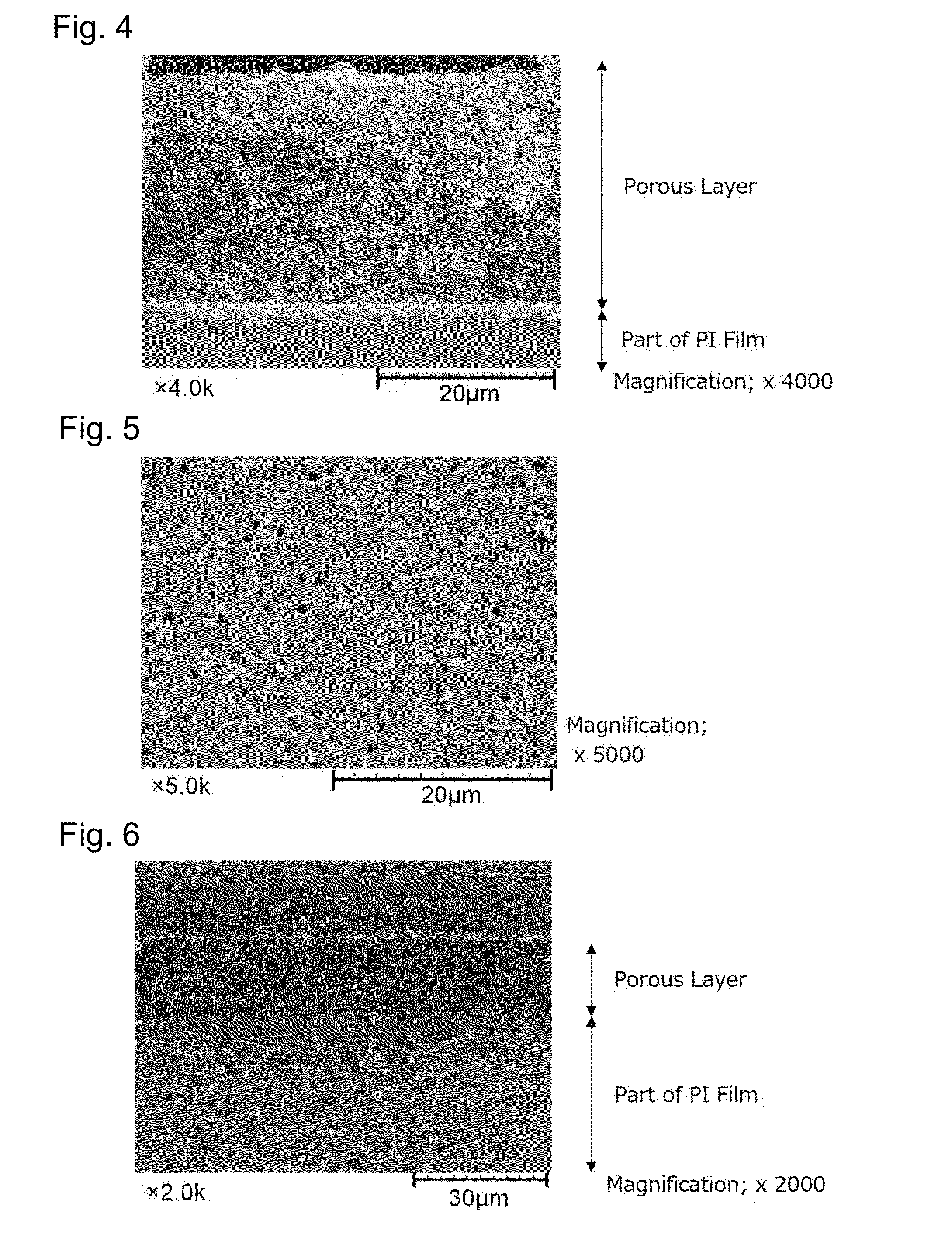Laminated body comprising porous layer and functional laminate using same
a technology of functional laminates and porous layers, which is applied in the field of laminates, can solve the problems of large molecular weight of polymeric compounds, inability to use, and inability to solve phase transition techniques such as variations in film qualities, and achieve excellent flexibility, sufficient strength, and excellent printability
- Summary
- Abstract
- Description
- Claims
- Application Information
AI Technical Summary
Benefits of technology
Problems solved by technology
Method used
Image
Examples
example 1
Porous Layer Layered Body A
[0307]The following were mixed with each other: a polyamideimide resin solution (trade name: “VYLOMAX N-100H” manufactured by Toyobo Co., Ltd.; solid content concentration: 20% by weight; solvent: NMP (N-methyl-2-pyrrolidone); solution viscosity: 350 dPa·s / 25° C.); a novolak type epoxy resin (trade name: “YDCN-700-5”, manufactured by Tohto Kasei Co., Ltd.) as a crosslinking agent; and NMP as a solvent. The blend ratio of the polyamideimide resin / NMP / the novolak type epoxy resin was a ratio by weight of 15 / 85 / 5. In this way, a film-forming material solution was obtained. A polyimide film (trade name: “KAPTON 200H” manufactured by Du Pont-Toray Co., Ltd.; thickness: 50 μm) as a base was fixed on a glass plate with a tape. A film applicator was used to cast the material solution, the temperature of which was set to 25° C., thereon under a condition that the gap between the film applicator and the base was 51 μm. After the casting, the workpiece was rapidly pu...
example 2
Porous Layer Layered Body B
[0309]A layered body B wherein a porous layer was layered on a base was yielded by making the same operations as in Example 1 except that a film-forming material solution was yielded by mixing the polyamideimide resin, NMP and the novolak type epoxy resin with each other to set the ratio by weight of the polyamideimide resin / NMP / the novolak type epoxy resin to 15 / 85 / 10. The thickness of the resultant porous layer was about 11 μm, and the total thickness of the layered body was about 61 μm.
[0310]About the resultant layered body B, a tape peeling test was made. As a result, no interfacial peeling was caused between the base and the porous layer. This layered body B was observed through an electron microscope. As a result, the porous layer adhered closely to the polyimide film, and recognized was a tendency that a skin layer was basically formed on the surface of the porous layer. Throughout the inside of the porous layer, there were independent and substanti...
example 3
Porous Layer Layered Body C
[0311]A layered body C wherein a porous layer was layered on a base was yielded by making the same operations as in Example 1 except that a film-forming material solution was yielded by mixing the polyamideimide resin, NMP and the novolak type epoxy resin with each other to set the ratio by weight of the polyamideimide resin / NMP / the novolak type epoxy resin to 15 / 85 / 15. The thickness of the resultant porous layer was about 21 μm, and the total thickness of the layered body was about 71 μm.
[0312]About the resultant layered body C, a tape peeling test was made. As a result, no interfacial peeling was caused between the base and the porous layer. This layered body C was observed through an electron microscope. As a result, the porous layer adhered closely to the polyimide film, and recognized was a tendency that a skin layer was basically formed on the surface of the porous layer. Throughout the inside of the porous layer, there were independent and substanti...
PUM
| Property | Measurement | Unit |
|---|---|---|
| porosity | aaaaa | aaaaa |
| pore diameter | aaaaa | aaaaa |
| thickness | aaaaa | aaaaa |
Abstract
Description
Claims
Application Information
 Login to View More
Login to View More - R&D
- Intellectual Property
- Life Sciences
- Materials
- Tech Scout
- Unparalleled Data Quality
- Higher Quality Content
- 60% Fewer Hallucinations
Browse by: Latest US Patents, China's latest patents, Technical Efficacy Thesaurus, Application Domain, Technology Topic, Popular Technical Reports.
© 2025 PatSnap. All rights reserved.Legal|Privacy policy|Modern Slavery Act Transparency Statement|Sitemap|About US| Contact US: help@patsnap.com



